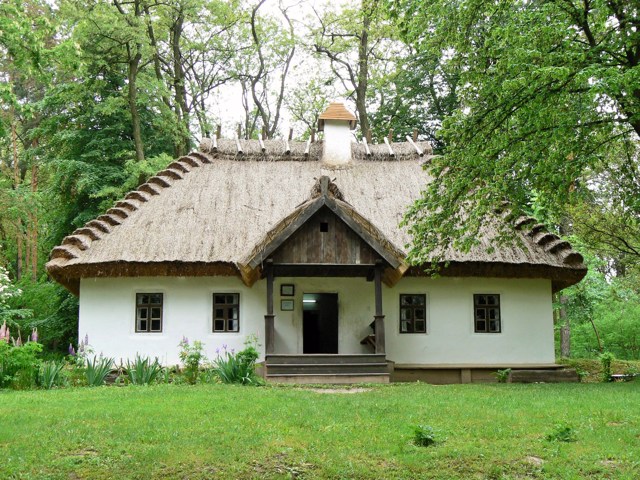Functional temporarily unavailable
General information about Kaniv
The ancient city of Kanev is located on the high right bank of the Dnieper, in a place where the river has a pristine channel. Probably, the city appeared in the XI century. as a transshipment point at the constant crossing of the Dnieper. It was first mentioned in the chronicles in 1144, when the Kiev prince Vsevolod founded the Church of St. George, which was later renamed the Assumption Cathedral. Now Kanev is better known thanks to the Shevchenko National Reserve "Tarasova Gora". In this picturesque place T. Shevchenko wanted to settle at the end of his life, but did not manage to implement his plan. Only after his death in 1861, according to his will, his remains were brought from St. Petersburg and buried on Chernecha (now Tarasova) Mountain. Later, a memorial complex wa ...
The ancient city of Kanev is located on the high right bank of the Dnieper, in a place where the river has a pristine channel. Probably, the city appeared in the XI century. as a transshipment point at the constant crossing of the Dnieper. It was first mentioned in the chronicles in 1144, when the Kiev prince Vsevolod founded the Church of St. George, which was later renamed the Assumption Cathedral. Now Kanev is better known thanks to the Shevchenko National Reserve "Tarasova Gora". In this picturesque place T. Shevchenko wanted to settle at the end of his life, but did not manage to implement his plan. Only after his death in 1861, according to his will, his remains were brought from St. Petersburg and buried on Chernecha (now Tarasova) Mountain. Later, a memorial complex was created, which attracts Ukrainians from all over the world not only by the memory of the outstanding poet-prophet, but also by the delightful Dnieper landscapes. Since 1972, the dam of the Kanevskaya HPP (444 MW) has been an integral part of the panorama.
Стародавнє місто Канів розташоване на високому правому березі Дніпра, в місці, де річка має первісне русло. Ймовірно, місто з'явилося в XI ст. як перевалочний пункт біля регулярної переправи через Дніпро. Вперше згадується в літописі у 1144 році, коли київський князь Всеволод заснував церкву Св. Георгія, перейменовану згодом в Успенський собор. Зараз Канів більше відомий завдяки Шевченківському національному заповіднику "Тарасова гора". У цьому мальовничому місці Т. Шевченка хотів оселитися під кінець життя, однак не встиг здійснити свій план. Тільки після смерті в 1861 році його останки, згідно із заповітом, перевезли із С.-Петербурга та поховали на Чернечій (нині Тарасовій) горі. Пізніше був створений меморіальний комплекс, який приваблює українців з усього світу не тіль ...
Стародавнє місто Канів розташоване на високому правому березі Дніпра, в місці, де річка має первісне русло. Ймовірно, місто з'явилося в XI ст. як перевалочний пункт біля регулярної переправи через Дніпро. Вперше згадується в літописі у 1144 році, коли київський князь Всеволод заснував церкву Св. Георгія, перейменовану згодом в Успенський собор. Зараз Канів більше відомий завдяки Шевченківському національному заповіднику "Тарасова гора". У цьому мальовничому місці Т. Шевченка хотів оселитися під кінець життя, однак не встиг здійснити свій план. Тільки після смерті в 1861 році його останки, згідно із заповітом, перевезли із С.-Петербурга та поховали на Чернечій (нині Тарасовій) горі. Пізніше був створений меморіальний комплекс, який приваблює українців з усього світу не тільки пам'яттю про видатного поета-пророка, але й чудовими дніпровськими краєвидами. Невід'ємною частиною панорами з 1972 року є гребля Канівської ГЕС (444 МВт).
Сплануй своє перебування у Kaniv
What to see and where to go in Kaniv
Tourist attractions and museums of Kaniv

Museum of Folk Decorative Art
Museum / gallery
The museum is located in a two-story building of the former Basilian school, founded in 1781 by the Uniate priest B. Fizykevych at the expense of Count S. Poniatowski, who then owned the city. The school was closed in 1838. Later, the house was also used for its intended purpose as a school. The second floor was built in Soviet times. In 1990, the Museum of Folk and Decorative Art, which had previously been located in the neighboring building of the Assumption Cathedral, moved to this building. The museum has more than 5 thousand exhibits: a collection of glass of the XIII-XVI centuries, wooden products, paintings. There is a collection of samples of traditional Ukrainian clothing and household items from three central regions - Cherkasy, Kyiv and Poltava. In particular, the primitive works of the People's Artist of Ukraine Maria Pryimachenko, the unique embroidery of the artist S. Ustymenko and others are presented.

Shevchenkivsky National Reserve
Museum / gallery

Tarasova Svitlytsia
Museum / gallery
The first Taras Shevchenko National Museum on Chernecha Hill in Kaniv "Tarasova Svitlytsia" appeared long before the creation of the Shevchenko National Reserve. As early as 1884, at the same time as the arrangement of Shevchenko's grave was completed, a house was built next to it. In one half of it lived the first caretaker of the grave Ivan Yadlovsky, opened the first national museum of the poet with a book of reviews. The house was dismantled in the 1930s, during the construction of a memorial on Tarasova Hill, but was restored in 1991. The museum exposition presents a copy of a portrait of Shevchenko donated to the museum by artist Ilya Repin, a copy of a towel embroidered for the museum by Lesya Ukrainka, an icon depicting Shevchenko in the image of a saint. In the second half, the room of the guard of Shevchenko's grave with the original samovar of Ivan Yadlovsky on the table was restored.
Reviews Kaniv
Geographical information about Kaniv
| {{itemKey}} | {{itemValue}} |
|---|---|
| Region |
Cherkasy |

